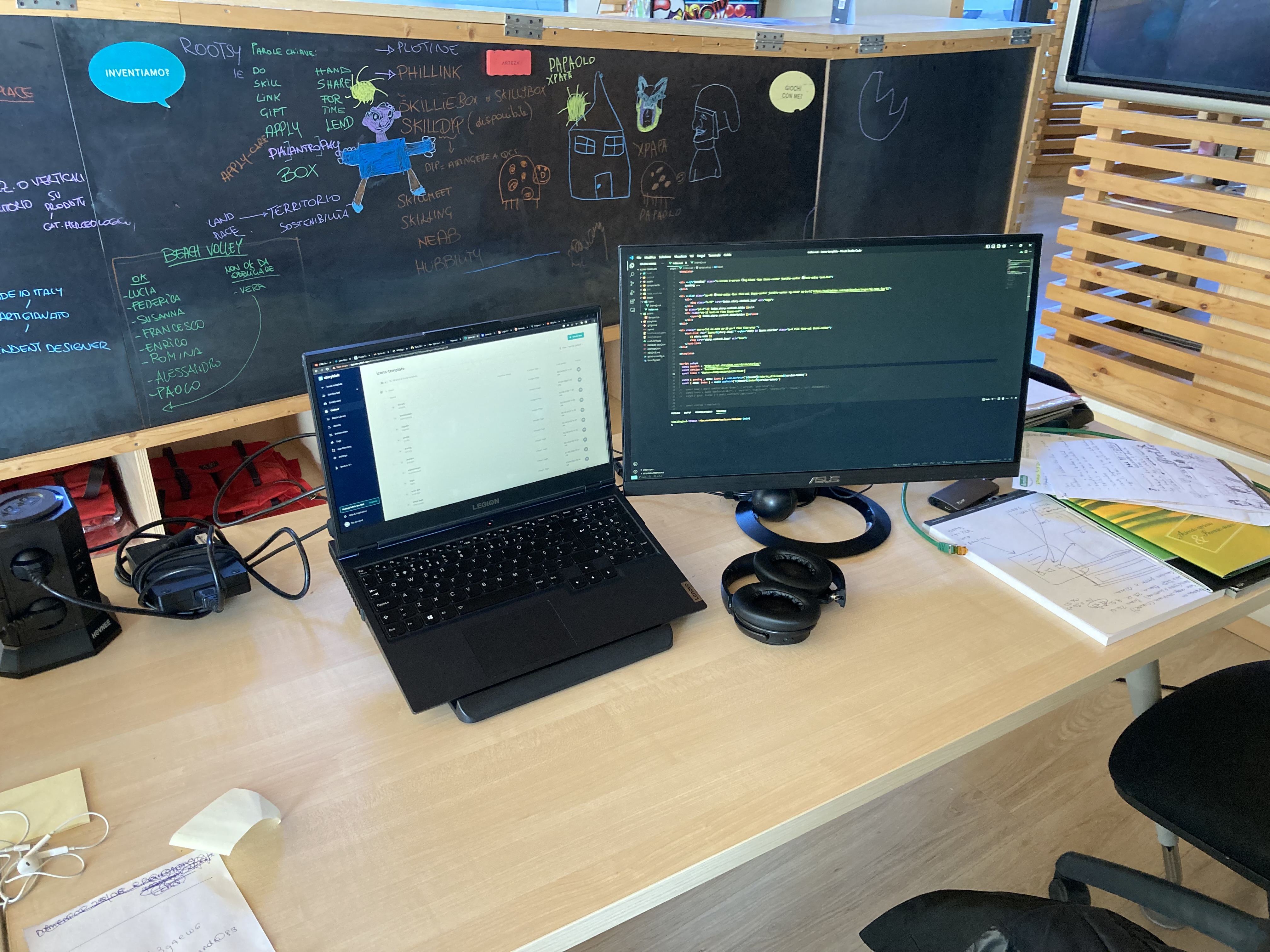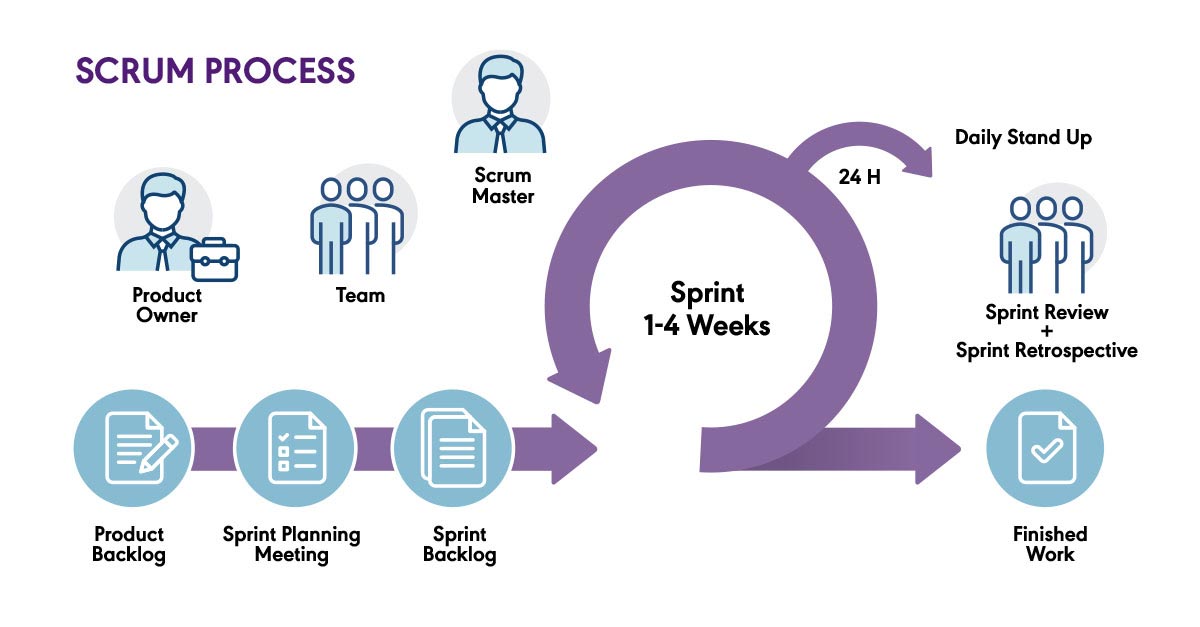Working Activity

My first day
On my first day, I was introduced to my company by Alessandro Cirocchi, Logix's CTO and my internship supervisor. He told me what they do, what software they use for communication (Slack) and how the daily meetings are organised (from 9:30 to 10:30) where we have to say what we did the day before and what we will do today, then Alessandro introduced me to Luca Spezzano, a front-end developer who works remotely from Turin, from now on he will be my mentor and trainer from whom I will learn, he taught me the best practises on how to manage bigger projects and maintain scalable code. On my first day, I did not tackle a single project because I had to carefully read the documentation of all the developer tools we were using. Then I practised what I learned by doing small projects and trying everything out, and when Luca realised I was ready, he decided to give me a bigger project to work on.
The scrum process

Logix is a technology company that leverages Slack for internal communication and conducts daily meetings at 9:30 AM to ensure team alignment. The company employs the Scrum framework, an agile methodology that enables efficient project management through iterative and incremental development, to deliver its projects.
In adherence to the Scrum framework, Logix conducts sprints - a bi-weekly meeting that involves the whole team. During these sprints, every team member documents their accomplishments, challenges, and areas for improvement on a shared Google Docs document. This approach fosters transparency, accountability, and collaboration among team members, leading to the timely delivery of high-quality projects.
Scrum is an agile framework that facilitates the collaborative development of complex products. The framework emphasizes adaptive planning, iterative development, and continuous delivery. Scrum employs a set of roles, events, artifacts, and rules to enable cross-functional teams to collaborate and deliver valuable software incrementally. The framework promotes transparency, inspection, and adaptation, allowing teams to identify and address issues quickly and effectively.